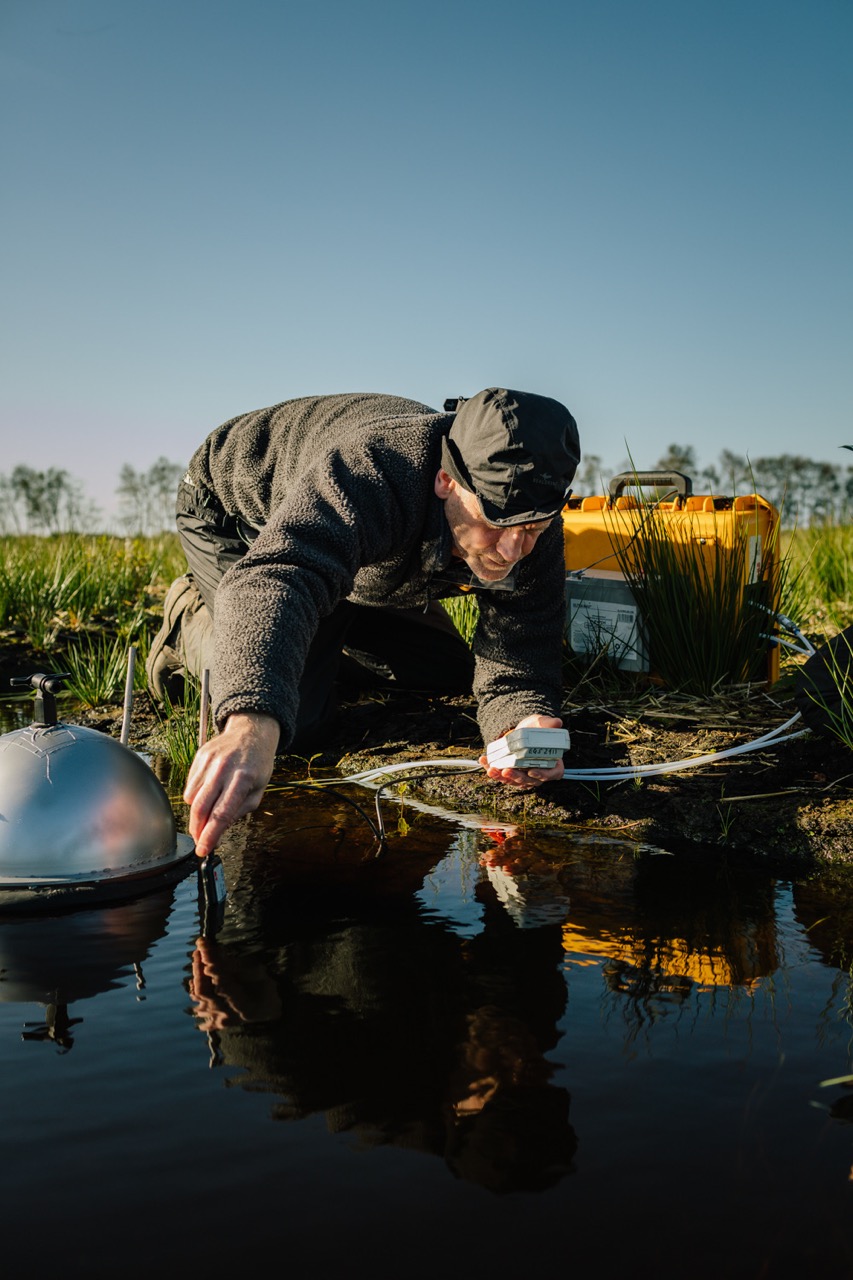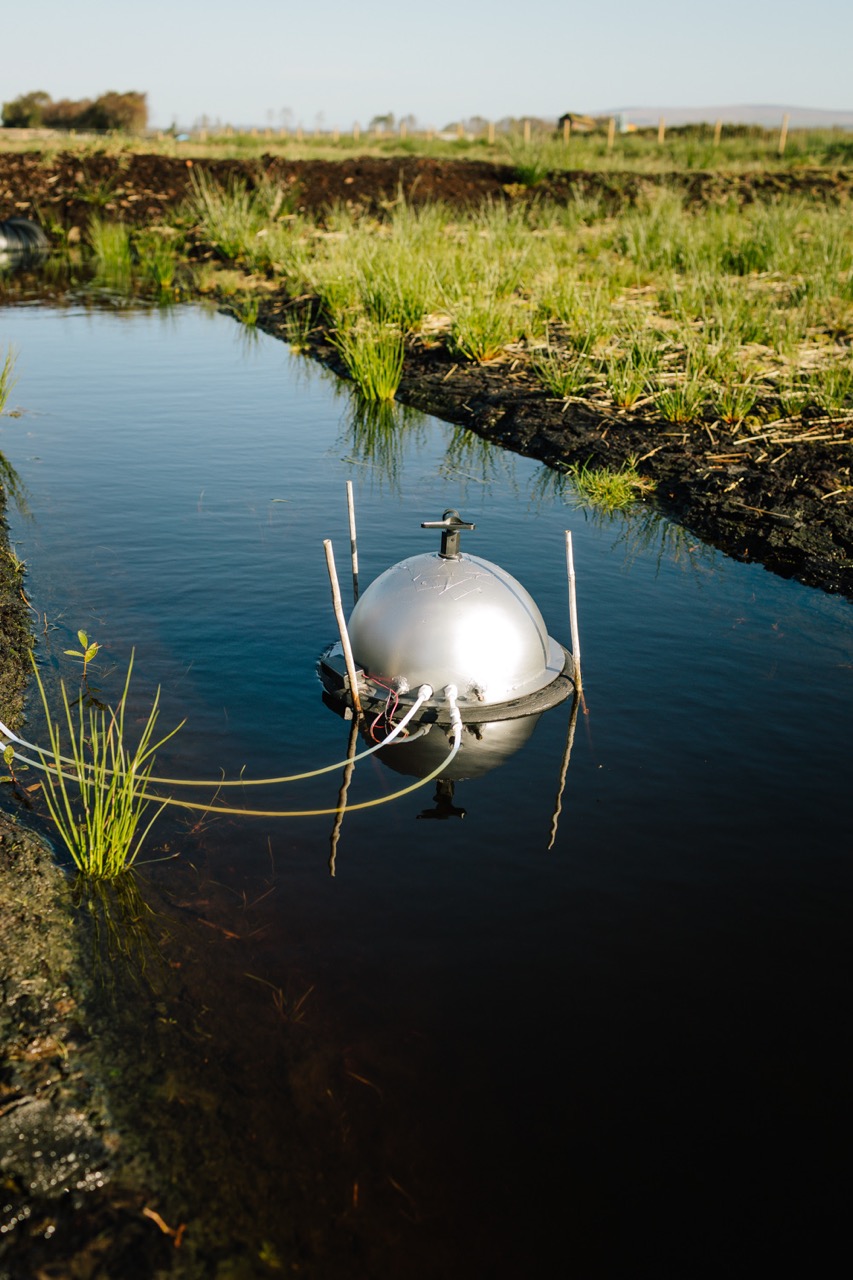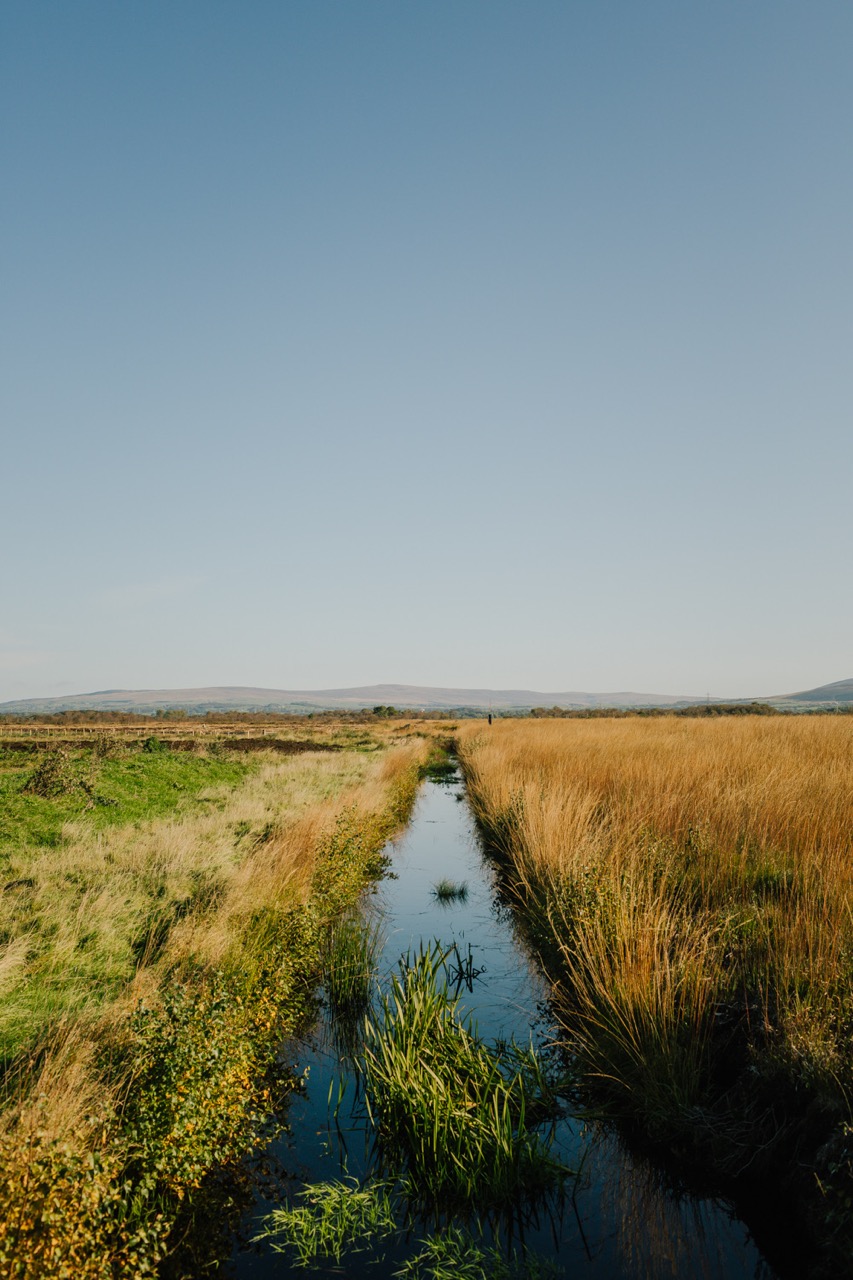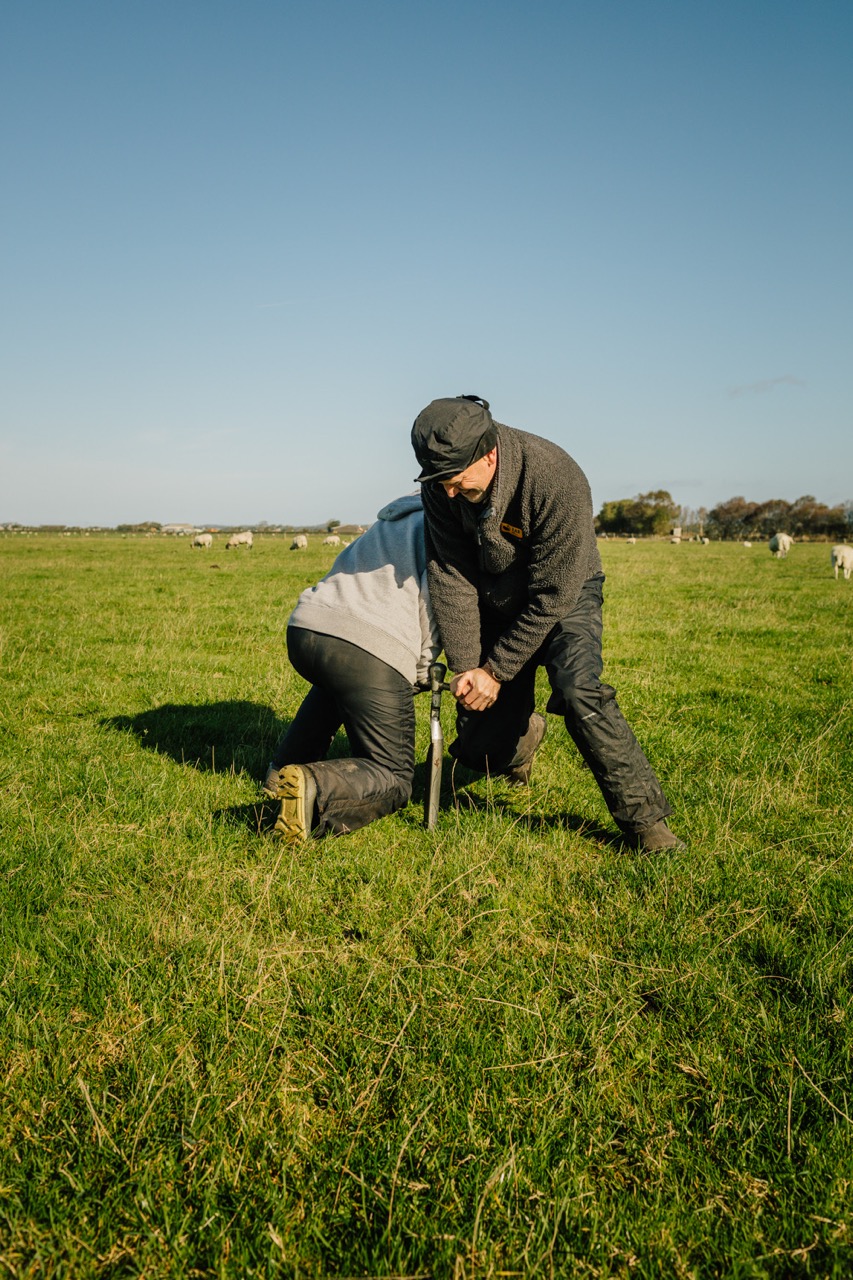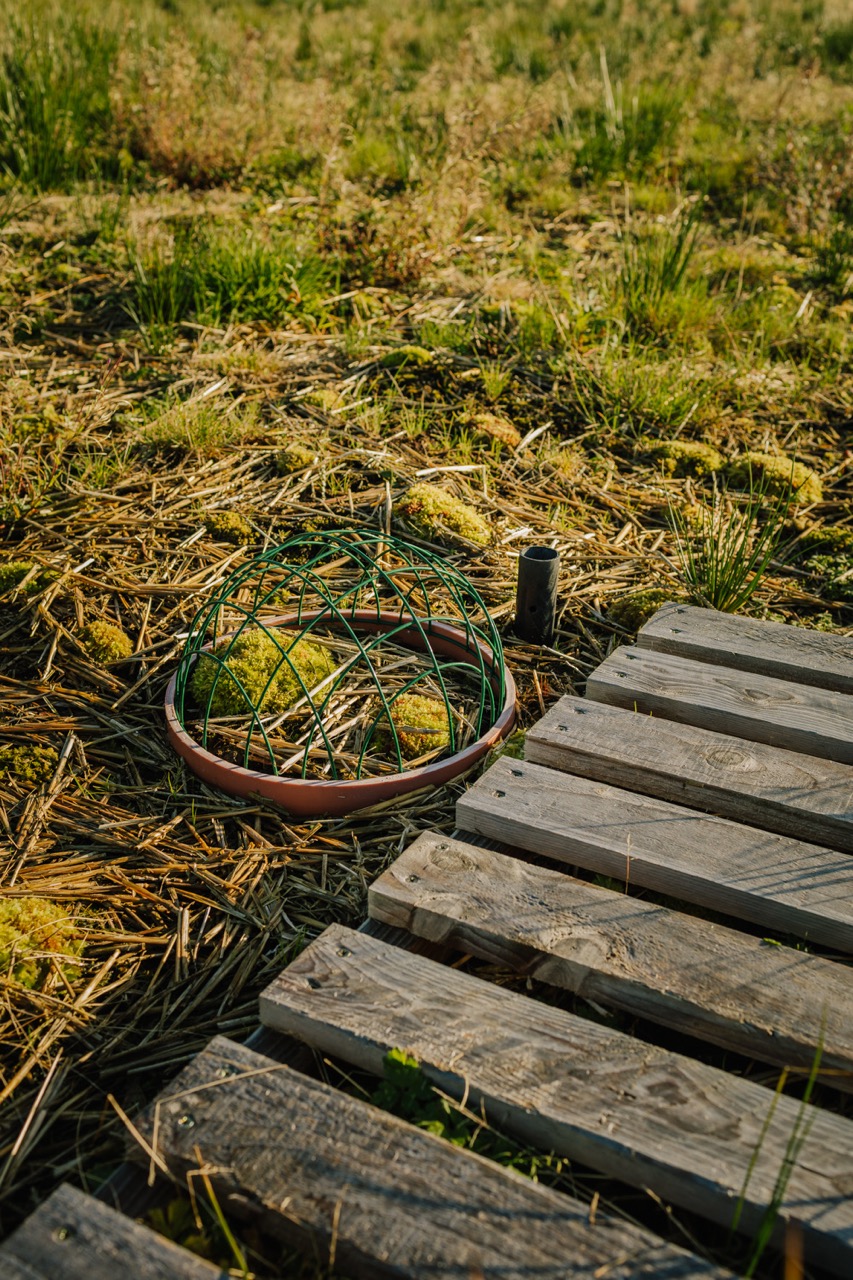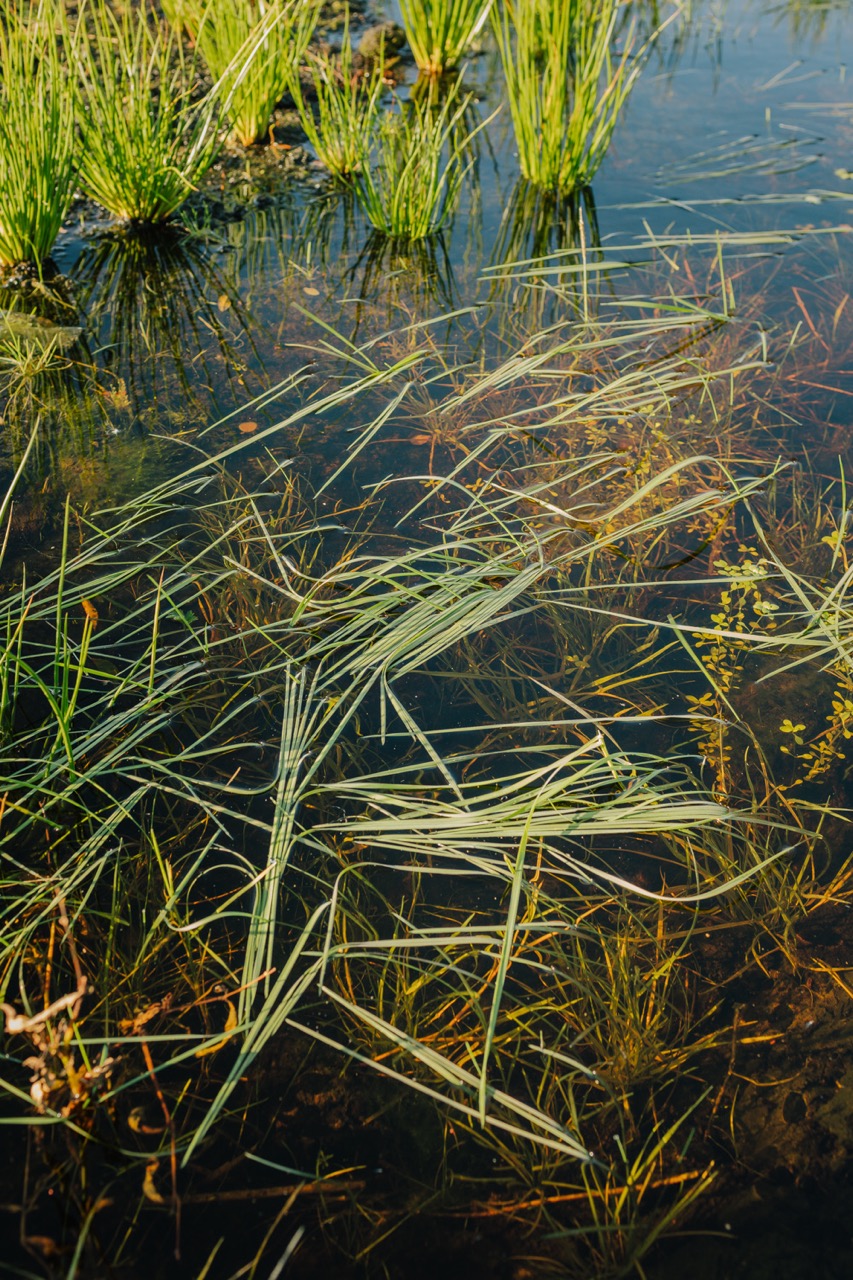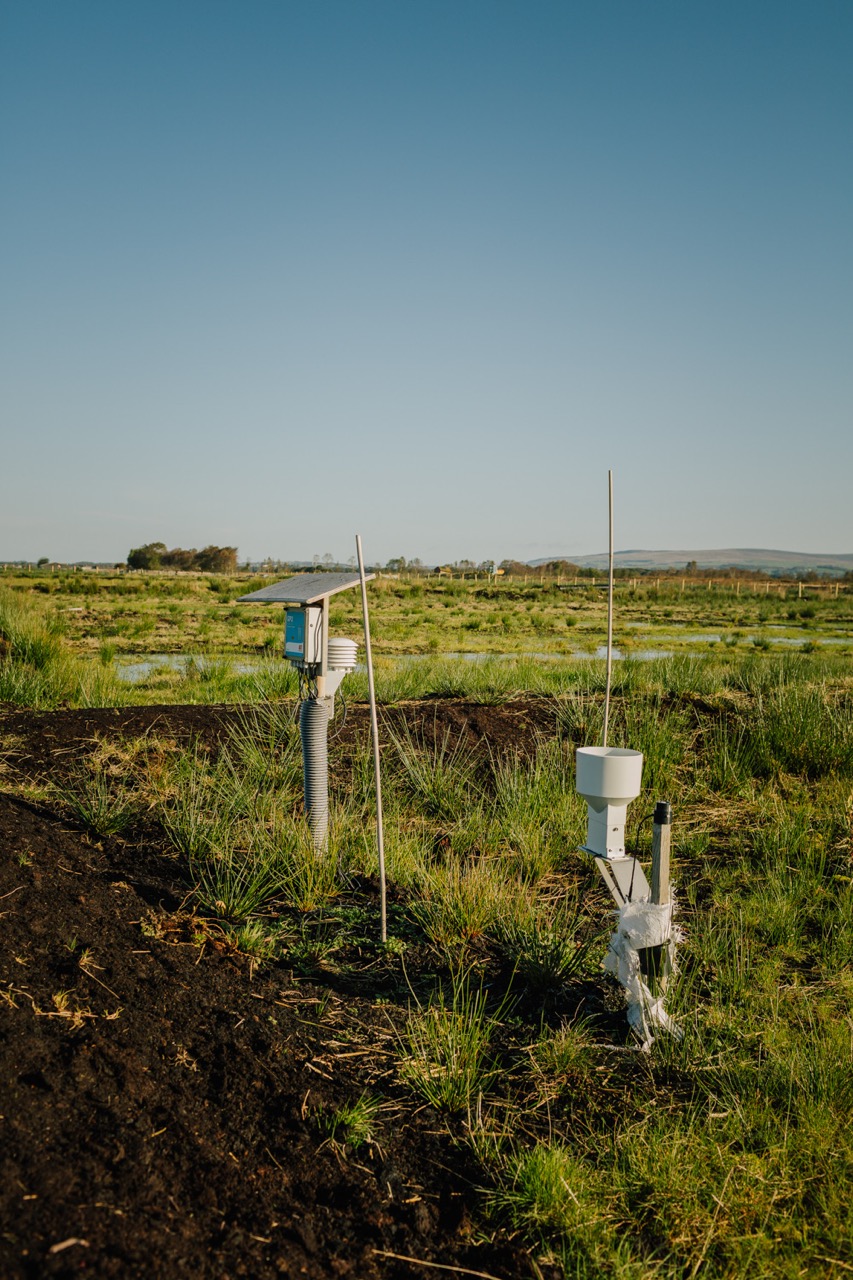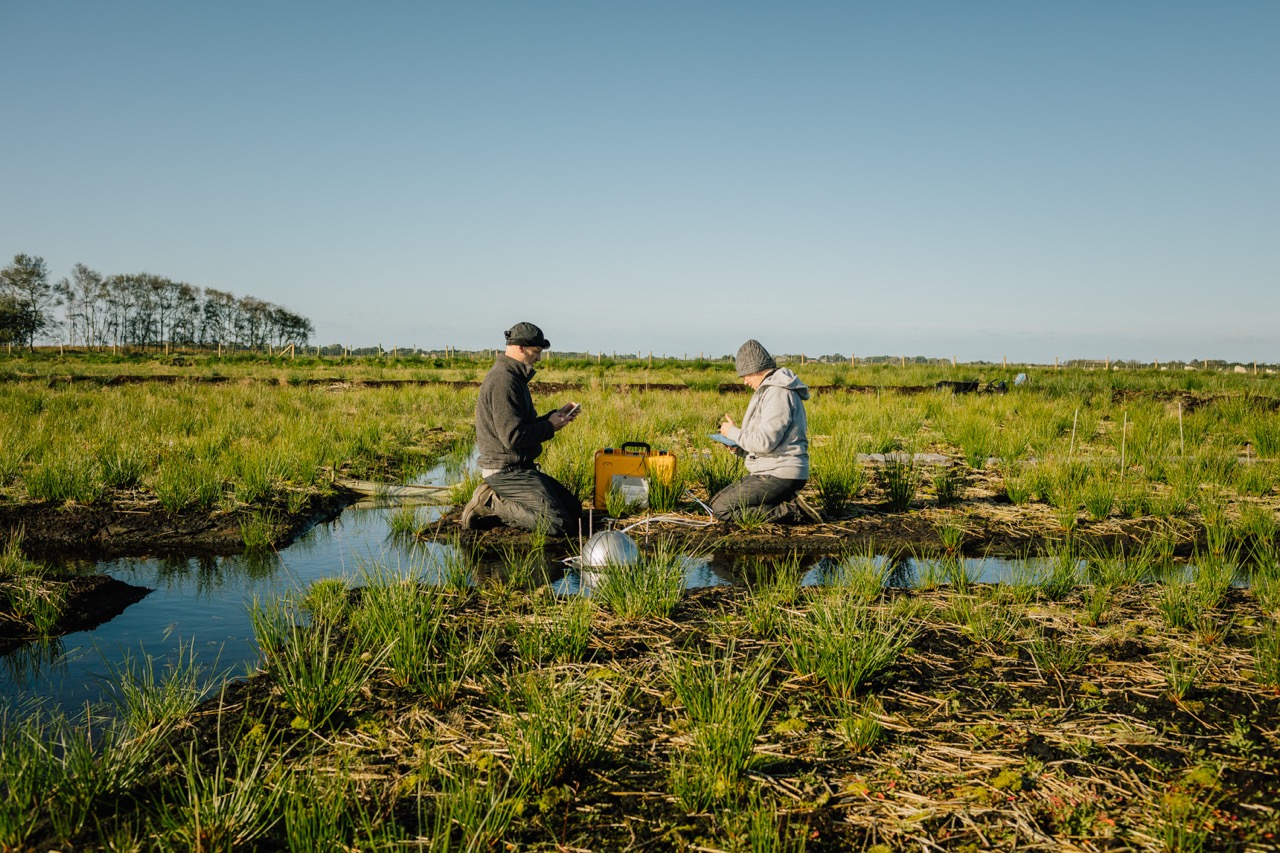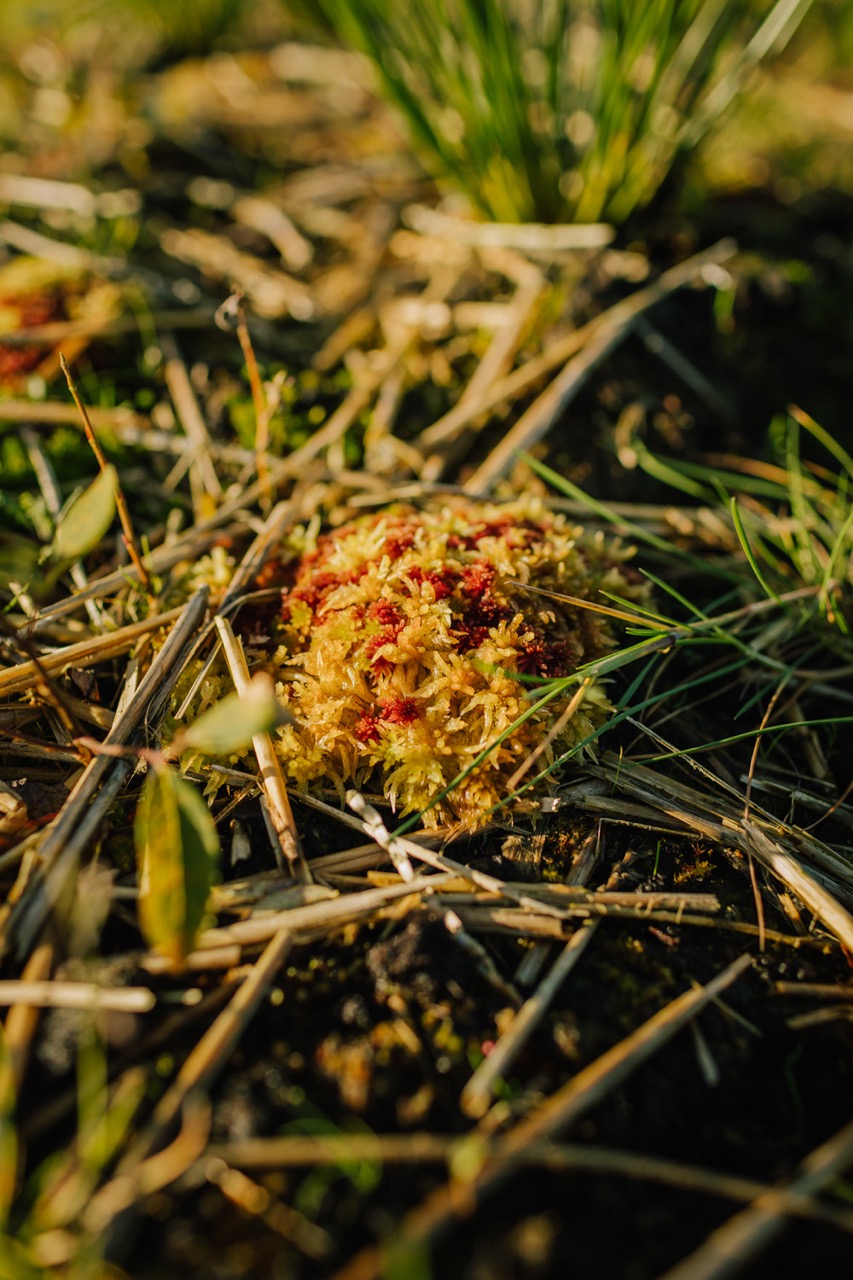Simon Bray
A series of images made in Lancashire of the Wildlife Trust's efforts to 're-wet' the lowland peat bogs. These waterlogged, acidic, low-nutrient ecosystems are the most carbon-dense lands on Earth. You want to safely store carbon for a thousand years? Nothing beats peat. It’s nature’s vault. This former farmland is being given a chance to retain the natural moisture which ensures the retention of carbon. The planting of thousands of sphagnum moss plants aids the surface level water retention acting like a carpet of sponge. Scientists from MMU monitor the progress of the project, measuring levels of carbon within the water and peat to check what is being retained or released into the atmosphere. They dig out a core to check the degradation of the soil below the surface and carefully manage the water levels using automated solar-powered cock and ball sluices.



